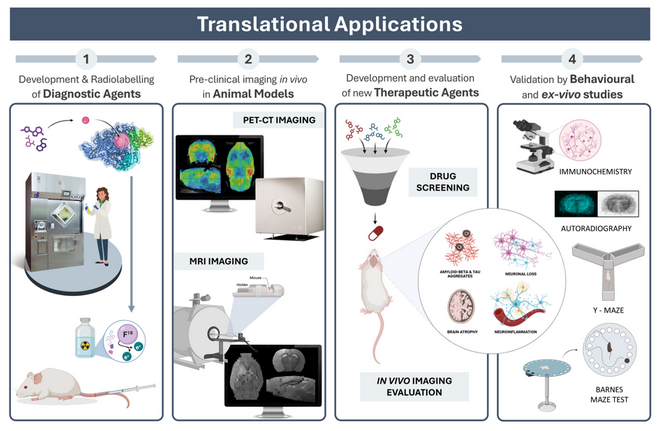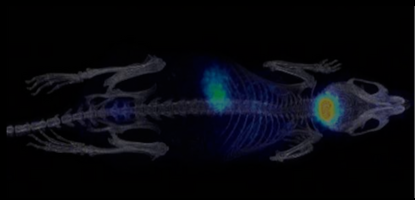- Development and evaluation of diagnostic and therapeutic agents for AD
- Investigation of pathophysiological aspects of brain ischemia

Alzheimer’s Disease remains the leading cause of dementia, imposing a significant societal and economic burden. Given its complexity, in vivo nuclear imaging stands as a unique and non-invasive means to investigate pathophysiological aspects, understand mechanistic complexities, and pinpoint new therapeutic targets.
Llop’s group is actively engaged in developing novel PET tracers for in vivo exploration of diverse pathophysiological hallmarks of Alzheimer’s Disease. Their research extends to the development of innovative diagnostic agents, longitudinal characterization of animal models and the assessment of therapeutic strategies to combat this debilitating disorder. Additionally, these tracers find application in addressing other central nervous system pathologies, such as brain ischemia.



